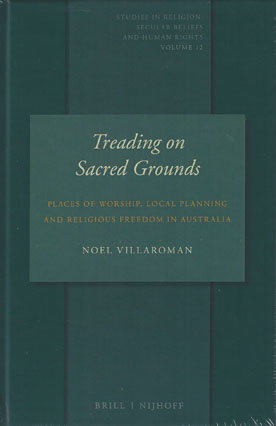
In Treading on Sacred Grounds: Places of Worship, Local Planning and Religious Freedom in Australia, Noel Villaroman analyses the engagement of religious groups with local councils in Australia in their applications to build places of worship. Such applications often encounter opposition from local residents who are reluctant to share their neighbourhood or street with the newly arrived and less known ‘other.’
The local councils, being the planning authority that grants or refuses such applications, are caught in the middle of these disputes. Using the lens of international human rights law, the book probes the local councils’ actions and their repercussions to religious freedom. The book has concrete legal and social implications that it is bound to impact not only legal scholarship but also, crucially, policy makers.